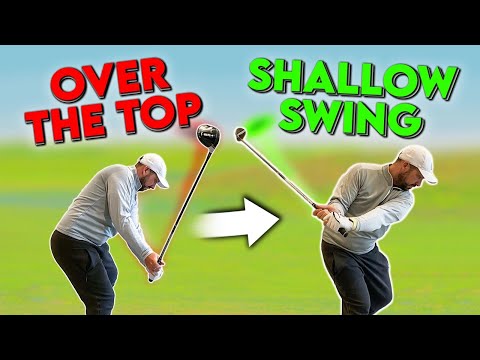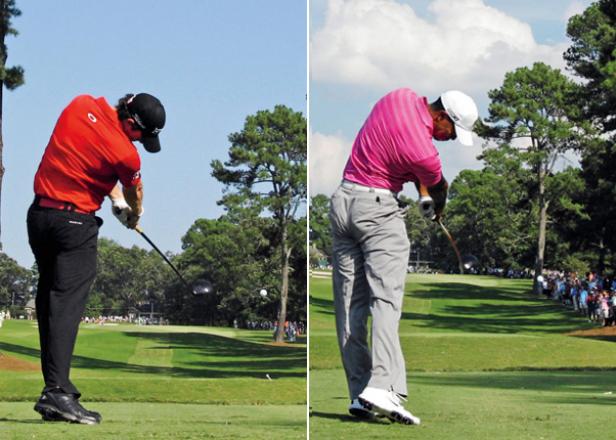
Golf is a game where ball speed and clubhead velocity are often confused. Remember that the ball speed is more important than your swing speed when choosing a golf ball. If you're looking to hit a long shot with your golf ball, you should choose a low compression one. For players with slower swing speeds, low-compression balls can be a good choice. Players with slower swing speeds can benefit from lower-compression golf ball.
Ball speed is faster than clubhead speed
As golfers we are often told about the importance of ball speeds and Tiger Woods' successes. What does ball speed actually mean and how can it impact your golf game? Golf balls can travel at speeds of 255ft/second, while planes can only travel at 51ft/sec. Ball speed is important for improving your game. However, many golfers ignore it. Let's have a closer look at what the difference is between clubhead speed and ball speed.
Your swing and clubhead speed are key factors in ball speed. The faster the ball moves, the better your clubhead will meet the ball. By hitting the center of your face more often, you can increase your ball speed. You should aim for a clubhead speed of at least 1 mile per hour. For consistent results, aim at a smash factor greater than 1.50. The greater your smash factor, you will have a more consistent golf swing.

For players who have slower swing speeds, low compression golf balls can increase their distance.
Low compression golf balls are ideal for slow swing speed players who need to generate distance. Low compression balls transfer energy from the clubhead more efficiently than other balls, so they provide greater distance and control on chip and putt shots. They are also softer than traditional golf clubs, which allows for slower swing speeds and better control over the ball's impact. TruFeel golf balls with low compression are most popular.
The compression rate is an important consideration when buying a golf club. A ball that has low compression is most suitable for slower players. These balls will give players with slower swing speeds more distance while also giving them a better feeling off the clubface. If you have a faster swing speed, it is advisable to select a ball with a greater compression rating. This will improve distance and control without compromising on control. Keep in mind that your strokes will be shorter then your driver's speed.
Choosing a golf ball that performs well for your swing speed
The distance you drive and the average speed of your clubhead will determine which golf ball is best for you. The average golfer makes a drive of about 250 yards with a clubhead speed of 2.3 mph. However, this is not the speed that many average players reach. A high compression rating (100+) golf ball is required if your swing speed is greater than 105 MPH. This ball will allow you to travel the most distances and provide the best ball flight.
There are many different sizes and types available for golf balls. It is important to choose the right size and type for your swing speed. High-speed golfers need a ball with a high compression rating to give them better control and accuracy. For those with lower speeds, a ball with a lower compression rating may be an option. If they prefer a higher compression rating, intermediate golfers can opt for a ball that has a higher compression rating.

You want the best compression for your golf ball
It is crucial to choose the right compression for your golf ball if you want to improve your game. There are several factors to consider, including your swing speed and swing path. Here's a breakdown on the important factors to consider before you buy a ball. Low compression balls are less likely to be compressed upon impact and tend to bounce back more strongly. High compression balls on the other side can generate lots of spin and backspin, but they are more difficult to hit.
Start by determining your swing speed. This will help you determine which golf ball will have the most compression and give you the maximum distance. You might choose a ball with a lower compression if your swing speed is medium. For fast swingers, a high compression ball is ideal. Your swing speed and the core of your golf ball will determine the compression.
FAQ
What is a golf ball like?
Golf balls are typically made of rubber, plastic or some combination thereof. It has dimples on its surface that make it bounce when struck.
Do I need any special skills to play golf?
No. All you need is a pair of walking shoes, a towel, and a set of clubs.
What clubs should I use for my purposes?
There are many types of clubs. Most players start out with a driver - a heavy metal club that allows them to hit the ball further. You can also use woods, irons or wedges to play, as well as putters.
Woods are longer clubs designed to allow players to get close to the pin while still being able to reach the green. These clubs are used for long drives or approaches.
Irons are shorter clubs that are designed to help players hit the ball closer to the pin. They are often used to chip and putt short distances.
Wedges are specialized clubs used to control flight paths of the ball. These are used to direct shots that require precise direction.
Putters are small clubs designed to roll the ball towards the cup. Players use them to make short putts.
What type of shot do you want to make determines the type of club that you choose. Different types of shots work better in different clubs.
Drivers can be used to hit the ball farther away than the hole, for instance. Wooden can be used to drive the ball far distances. Irons are perfect for short shots. Wedges are excellent at controlling the flight of the ball. Putters are ideal for rolling the ball into holes.
Where can I find a golf course?
Most major cities have their very own golf courses. These courses offer quiet practice for your swing.
If you prefer a more casual atmosphere, one of the many country's golf resorts might be a good option.
What kind of clothing should I wear on the course?
It is important to dress appropriately when you play golf. What should you wear?
-
Shoes that fit comfortably - Your feet should be snugly supported by the shoes you choose. They should provide support and stability.
-
Lightweight trousers, or shorts. The length of your shorts should cover your knees. Trousers should not be too long to allow for easy bending.
-
A long-sleeved shirt is recommended. This shirt should provide protection from the sun. You should have good ventilation.
-
Shorts or sweaters - Pants must be loose-fitting, comfortable and not restrict your movement. They should allow you freedom of movement.
-
Socks – Choose socks that are soft and comfortable.
-
Hat – Make sure you choose a hat that fits comfortably. It should cover both your ears and neck.
-
Sunscreen lotion - Apply sunscreen before you leave for the golf course.
How do I practice my golf swing?
Practice makes perfect! Practice is essential for any sport. To improve your skills at golf, you need to practice. You will become familiar with the fundamental mechanics of the swing if you practice.
You should practice using both your hands. First, practice with shorter shots. Next, move onto longer drives. Finally, practice chipping/putting.
How do I learn to play golf?
Learning how to play the game of golf takes practice and patience. However, it is possible to improve your game over time. Here are some tips to help you:
-
It is essential to practice regularly. Golf requires constant attention and concentration. You will not improve your skill level if you don't practice enough.
-
Play with people who play. Playing with others helps you to develop your own style.
-
Before you start playing, make sure to read up on golf. This will help you get a sense of the things you should work on.
-
Don't try to master everything all at once. Begin by focusing your attention on one aspect. One example is to work on your putting and chipping skills. Once you feel confident in this area, move on to another part of your game.
-
Take lessons. Take lessons. They can help you improve your posture, swing speed and stance.
-
Try new techniques. Experiment with new grips and stances.
-
Keep track of your progress. Record your scores and keep track of your progress. This way, you can identify areas where you need improvement.
-
Join your local golf club. There are many clubs around that offer free lessons. Many clubs offer free lessons and have helpful members who are willing to help newcomers.
-
Get a coach. A coach can offer guidance in certain areas.
Statistics
- In the United States, the number of people who play golf twenty-five times or more per year decreased from 6.9 million in 2000 to 4.6 million in 2005, according to the [51] (en.wikipedia.org)
- Professional golfers typically make between 60% and 70% of greens in regulation. (en.wikipedia.org)
- Buying a set of Titleist or Taylor-Made irons for nearly $1,000 is simply not necessary and likely a waste of money. (golficity.com)
- Professional golfers typically make between 60% and 70% of greens in regulation. (en.wikipedia.org)
External Links
How To
How To Hit A Perfect Bunker Shot
A bunker shot is a type of golf shot where you aim at a specific spot on the green (the hole) to make sure your ball lands there without bouncing off the surface. This is done by taking advantage if the green slopes. This is done to ensure that the ball travels as straight as possible towards the hole.
Golf is all about finding the best line to get to your goal point. You have to consider several factors such as how much distance away you are from the target, what kind of terrain you're hitting through, whether the ball needs to bounce off the ground or fly straight, and even weather conditions.
It is important to understand the fundamentals of bunker shooting in order for you to achieve perfect results. To start, determine whether your bunker shot is going uphill or lower. You will need a drawing club if you are going uphill. You will need to swing with a fade if your face is downhill. Next, calculate how fast you must move your body to stop it from bouncing off green. Measure the angle between the ball's head and the direction it is traveling. The final step is to measure the size of your bunker.
These are the basics of swinging. Just like any other shot, you should be able to swing the ball hard enough that it passes the club head's face but slow enough to prevent it from bouncing off of the green. You can start your approach once you have found the right speed, trajectory and direction. Approach the ball slowly until you are close enough to see the landing area. Take one more look at the ball and release it. If all goes according plan, you will be able to make a perfect bunker shot.